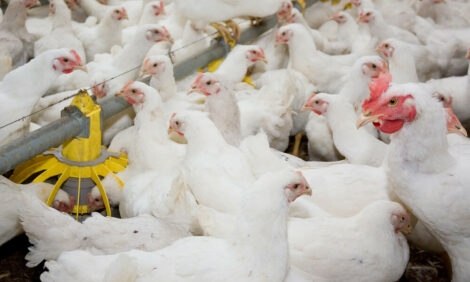



International Egg and Poultry Review
By the USDA's Agricultural Marketing Service - This is a weekly report looking at international developments concerning the poultry industry, this week looking EC Measures to Support the Poultry Market.
European Commission Measures to Support the Poultry Market
On June 21, 2006, the management committee for eggs and poultry
approved a Commission proposal to allow the co-financing by the EU
budget of measures to support the poultry market. Outbreaks of highly
pathogenic avian influenza across the EU earlier this year resulted in
an excess supply of poultry meat and eggs after consumers lost
confidence in the safety of those commodities. Poultry consumption
fell as much as 70 percent in some countries. FAO revised the 2006
forecast of global poultry meat consumption down nearly 4 million
tons.
The combination of high inventories, additional costs for storage and
associated low commodity prices led to a market crisis. European
poultry stocks reached over 300,000 MT. Up to this time, the only market
support measures were export subsidies. There was no possibility to
provide EU aid due to market problems linked to a fall in sales caused
by a loss of consumer confidence.
The new aid measures are aimed to temporarily reduce production,
not to provide aid for private storage or the destruction of existing stocks
of meat. Mariann Fischer Boel, Commissioner for Agriculture and Rural
Development, said “Thanks to the recent improvement in the market
situation, the industry should be able to use existing stocks.”
The expected cost to the EU budget of the measures proposed is
between €50 and €65 million (US$63.8* and US$82.8* million). The
aid measures which can be covered are: the destruction of hatching
eggs; processing of hatching eggs; the destruction of chicks (of chicken,
guinea fowl, duck, turkey and goose); the early slaughter of some of
the breeding flock; the extension of periods of temporary non-production
beyond three weeks; voluntary reduction in output by reduced placing
of chicks; early slaughter of ready to lay pullets.
Fourteen Member States have requested aid measures: Czech
Republic, Germany, Greece, Spain, France, Ireland, Italy, Cyprus,
Hungary, the Netherlands, Austria, Poland, Portugal and Slovakia.
Cases of avian influenza H5N1 in wild birds have occurred in fourteen
Member States and outbreaks in domestic poultry have occurred in
France, Sweden, Germany, Denmark and Hungary.
*On July 10 €1 = $1.2736
Source: Europa Press Release, Food and Agriculture Organization,
news wires
European Commission Investigates Italy
On July 4, 2006, the EC decided to launch an investigation into the
measures taken by Italy to deal with the AI crisis. Italy’s government
planned to purchase 17,000 metric tons of poultry meat and other
poultry products, to suspend tax payments and social security
contributions and payments for operators in the poultry sector, and to
grant aid for loans for conversion and restructuring of poultry
undertakings affected by the crisis in the poultry sector.
Italy’s commercial flocks have not had a case of Highly Pathogenic
Avian Influenza H5N1. After several wild swans and ducks tested positive
in February 2006, Italian authorities reacted quickly and applied the
emergency measures called for in the national plan, which complies
with EU and international requirements.
Average per capita consumption in Italy before the AI scare was about
18 kilos of poultry meat and 200 eggs per. After AI was found in wild bird
in Italy, consumption fell sharply. In ordinary times, Italy has 2,750 broiler
farms producing 700,000 MT of meat annually, 700 turkey farms
producing 350,000 MT of meat annually and 2,000 farms producing 13
billion eggs each year.
Italy has one month to respond to the investigation and to provide
necessary details. Once the decision is published in the Official Journal
of the European Union, other stakeholders will have one month to
send in their comments.
Source: European Commission, USDA Foreign Agricultural Service,
news wires
To view the full report, including tables please click here
Source: USDA's Agricultural Marketing Service - 12th July 2006









